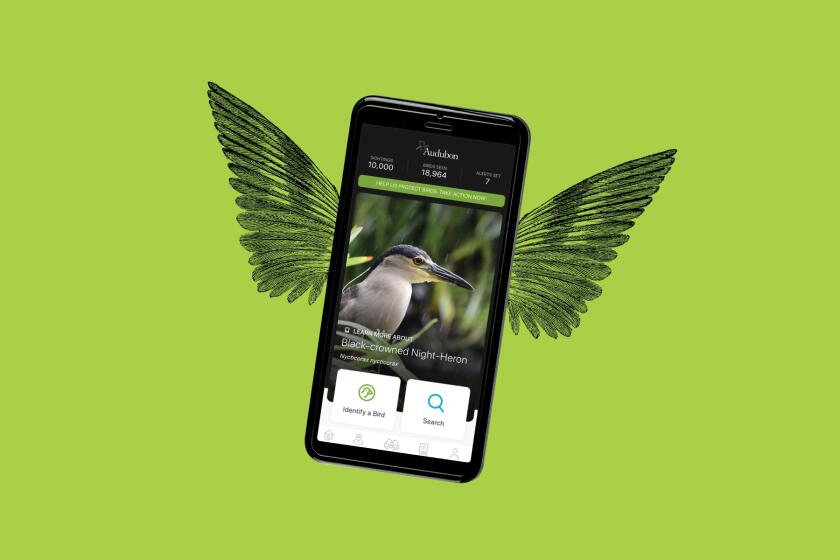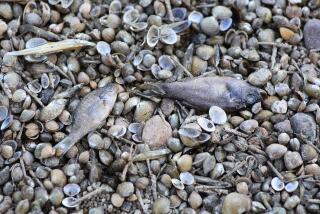Why white-water rafting could be the safest way to a family vacation this summer
- Share via
If and when life returns to normal — whatever the heck that will mean — this spring or summer, one of the first things I want to do is get on a river with my kids, blast through frothy rapids, sleep under the stars and have some adventure. I know I’m not alone in that wish.
David Baker, a Seattle doctor who’s been on the front lines of battling the coronavirus, said he’s planning a white-water trip with his wife and two children to recharge his batteries and share some quiet time in the wilderness.
“We’ll need it,” said Baker, who was quarantined for a short time because of his exposure to patients with COVID-19. “It’s been a strange and scary experience.”
Baker said he and his spouse and their two kids, ages 12 and 15, are looking forward to rafting the Grande Ronde River in northeast Oregon in July.
Their first family river outing was a four-day trip on the Class III (exciting, but suitable for kids as young as 7) Rogue River in southwest Oregon with Northwest Rafting.
It’s easy to start birding in your backyard. All you need are binoculars and a bit of curiosity
“The Rogue was the perfect introduction, and we’ve been on that river a couple more times since then,” said Baker, who owns his own raft. “The river was thrilling, the scenery sublime and the guides were great with the kids. Since then, we’ve graduated up and done longer and harder rivers, so much so that it’s become a pretty big part of our lives.”
Jane Jones, who lives in Keystone, Colo., began rafting with her son and daughter, now 38 and 41, when they were in elementary school.
“That got them jazzed about wanting to go again and again,” said Jones, who has taken her two grandchildren and their parents on white-water river trips.
“I don’t give traditional gifts anymore,” Jones said. “I give family experiences like this because they mean so much more. And I especially like taking my family to wilderness places, away from cellphones and electronic devices, to slow down and enjoy nature.”
Jones said one of her favorite excursions was an OARS — Outdoor Adventure River Specialists (oars.com) — trip on the Green River through the Gates of Lodore in Dinosaur National Monument on the Colorado-Utah border.
“The guides were great — they played fun and silly games with the kids — and we had a circle time at the end of each day where, unless you wanted to go for a hike or read a book, we sat and chatted, talked about the rapids and learned a lot about each other. The rest of the world and its worries seem far, far away.”
Download some of our favorite birding apps, and then start looking up.
Steve Markle, a spokesman for Angels Camp, Calif.-based OARS, said he hopes his company can start running trips by late June, though the timing is dependent on the easing of stay-at-home orders.
But he said the water will churn this spring and summer on the rivers of the West, regardless of whether rafts float on them.
Even though the Sierra snowpack is at about 50%, Markle said reservoirs, which provide releases for July, August and September flows, are in good shape because of 2019’s ample snowfall.
Elsewhere in the West, the snow is more abundant, with the snowpack in much of the Rockies at 100% or more.
“Here at OARS, we’re in a hunker-down mode,” he said. “But people can certainly still dream about and plan for getting out on a rafting trip in the summer, when we hope things will be back to normal.”
Zach Collier, who runs Northwest Rafting out of Hood River, Ore., said he‘s delayed the start of trips this season.
As for planning a trip, he said the Middle Fork of the Salmon River in Idaho is best for families from mid-July through August. In July, when runoff is diminished and the top of the river is unrunnable, trips usually start 25 miles downstream, and rafters are flown into a Forest Service airstrip at Indian Creek.
“From there, the river is mellow but builds up to the biggest drops on the final day,” he said. “That works out well for families to get used to the rapids and even use inflatable kayaks on the easier stuff.”
Here are 10 family-friendly, Class III rivers in California and the West:
1. Kern River, California. The closest stream to Los Angeles, about three hours away. The Jungle Run section of the Lower Kern tumbles eight miles through a canyon below Lake Isabella that’s filled with granite boulders and is away from crowds.
2. Kings River, California. This stream is dependent on snowmelt, which means it will probably flow only into mid-July. Rafters boat a 10-mile stretch through the foothills of the Sierra east of Fresno in countryside covered with oaks and sycamores.
3. South Fork of the American River, California. In the foothills about an hour east of Sacramento, one of the most popular white-water stretches in the United States. Outfitters run a 21-mile stretch that can be done as part of a two-day trip. Or paddlers can do shorter one-day outings.
4. Rogue River, Oregon. Courses 40 miles through the Klamath Mountains in southwestern Oregon. Typically floated in three to five days; spectacular scenery and abundant wildlife.
5. Lower Klamath River, California. South of the Oregon border and similar to the Rogue, but the run is shorter at about 35 miles. Less of a wilderness experience because a road is beside much of it. Fun and bouncy Class II and III rapids, ideal for families with kids as young as 4.
6. Middle Fork of the Salmon River, Idaho. Rumbles through the Frank Church River of No Return Wilderness and peppered with numerous hot springs on its banks. One of the top white-water experiences in North America.
7. Green River, Colorado/Utah. The Green flows 44 miles between soaring canyon walls and through Dinosaur National Monument. Fun and bouncy Class III rapids, enjoyable side hikes and lots of wildlife, including bighorn sheep.
8. Yampa River, Colorado. Starts near Steamboat Springs, Colo., and flows west, eventually joining the Green in Dinosaur National Monument. The stunning canyons on this 70-mile journey are similar to the Green’s, but its season is shorter and usually ends in mid-July. Native American ruins, hiking opportunities and one big Class IV rapid called Warm Springs, which I walked around last summer when I kayaked the river.
9. Lower Salmon River, Idaho. Runs through majestic gorges with white, sandy beaches ideal for camping. The river is gentle except for some punchy rapids, which makes it good for stand-up paddleboarding and learning how to manage an inflatable kayak. Abundance of Native American rock art.
10. Snake River, Idaho/Oregon border. Flows through Hells Canyon, with mountains rising to more than 7,000 feet on either side. It offers great hiking, fishing and Nez Perce pictographs. Rafting safety in the time of coronavirus
Rafting outfitters say they are taking extra safety precautions this year because of the coronavirus pandemic.
Zach Collier, who runs Northwest Rafting, said his company may add boats and guides to trips to allow more space between passengers and will emphasize social distancing at campsites. Guides’ and clients’ temperatures might also be taken before trips start. Guides will prepare meals that are easier to serve and, he said, “will definitely be wearing face masks.”
“Setting up safety protocols is a work in progress,” Collier said. “We’re very aware of Centers for Disease Control guidelines and will do our best to keep passengers and guides safe.”
Collier said rafting trips with 20 participants could be split into two groups on some rivers to lessen contact.
Boaters also may be able to paddle in one-person inflatable kayaks known as “duckies,” he added.
Keeping a family together in one raft is another option, he said. Or couples could paddle a two-person raft on easier stretches of river, with instruction from guides, and portage their boats around more difficult rapids.
Gear boats are 18 feet long, so passengers could ride at the front and back and still have nine feet between them and a guide rowing the raft.
Many companies supply sleeping bags and other gear, but he said outfitters are encouraging people to bring their own camping equipment.
“We’re lucky that we have twice as much of this equipment as we need for our trips so we can also let it sit for a week or two after a trip. We also have pretty strict protocols for cleaning our equipment if we need to do that, but it’s pretty intense work we’re trying to avoid.”
Collier said all drinking water on trips is purified and, according to his understanding of CDC guidelines, he’s unaware of any cases of known virus transmission through rivers or lakes.
“The virus is spread through person-to-person contact,” he said. “We are boating on mountain streams that have some of the cleanest water you’ll find.”
More to Read
Sign up for The Wild
We’ll help you find the best places to hike, bike and run, as well as the perfect silent spots for meditation and yoga.
You may occasionally receive promotional content from the Los Angeles Times.








